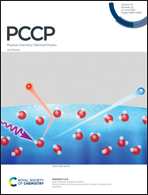Improving the accuracy of the variational quantum eigensolver for molecular systems by the explicitly-correlated perturbative [2]R12-correction
Abstract
We provide an integration of the universal, perturbative explicitly correlated [2]R12-correction in the context of the Variational Quantum Eigensolver (VQE). This approach is able to increase the accuracy of the underlying reference method significantly while requiring no additional quantum resources. The proposed approach only requires knowledge of the one- and two-particle reduced density matrices (RDMs) of the reference wavefunction; these can be measured after having reached convergence in the VQE. This computation comes at a cost that scales as the sixth power of the number of electrons. We explore the performance of the VQE + [2]R12 approach using both conventional Gaussian basis sets and our recently proposed directly determined pair-natural orbitals obtained by multiresolution analysis (MRA-PNOs). Both Gaussian orbital and PNOs are investigated as a potential set of complementary basis functions in the computation of [2]R12. In particular the combination of MRA-PNOs with [2]R12 has turned out to be very promising – persistently throughout our data, this allowed very accurate simulations at a quantum cost of a minimal basis set. Additionally, we found that the deployment of PNOs as complementary basis can greatly reduce the number of complementary basis functions that enter the computation of the correction at a complexity.
![Graphical abstract: Improving the accuracy of the variational quantum eigensolver for molecular systems by the explicitly-correlated perturbative [2]R12-correction](/en/Image/Get?imageInfo.ImageType=GA&imageInfo.ImageIdentifier.ManuscriptID=D2CP00247G&imageInfo.ImageIdentifier.Year=2022)
- This article is part of the themed collection: 2022 PCCP HOT Articles


 Please wait while we load your content...
Please wait while we load your content...
